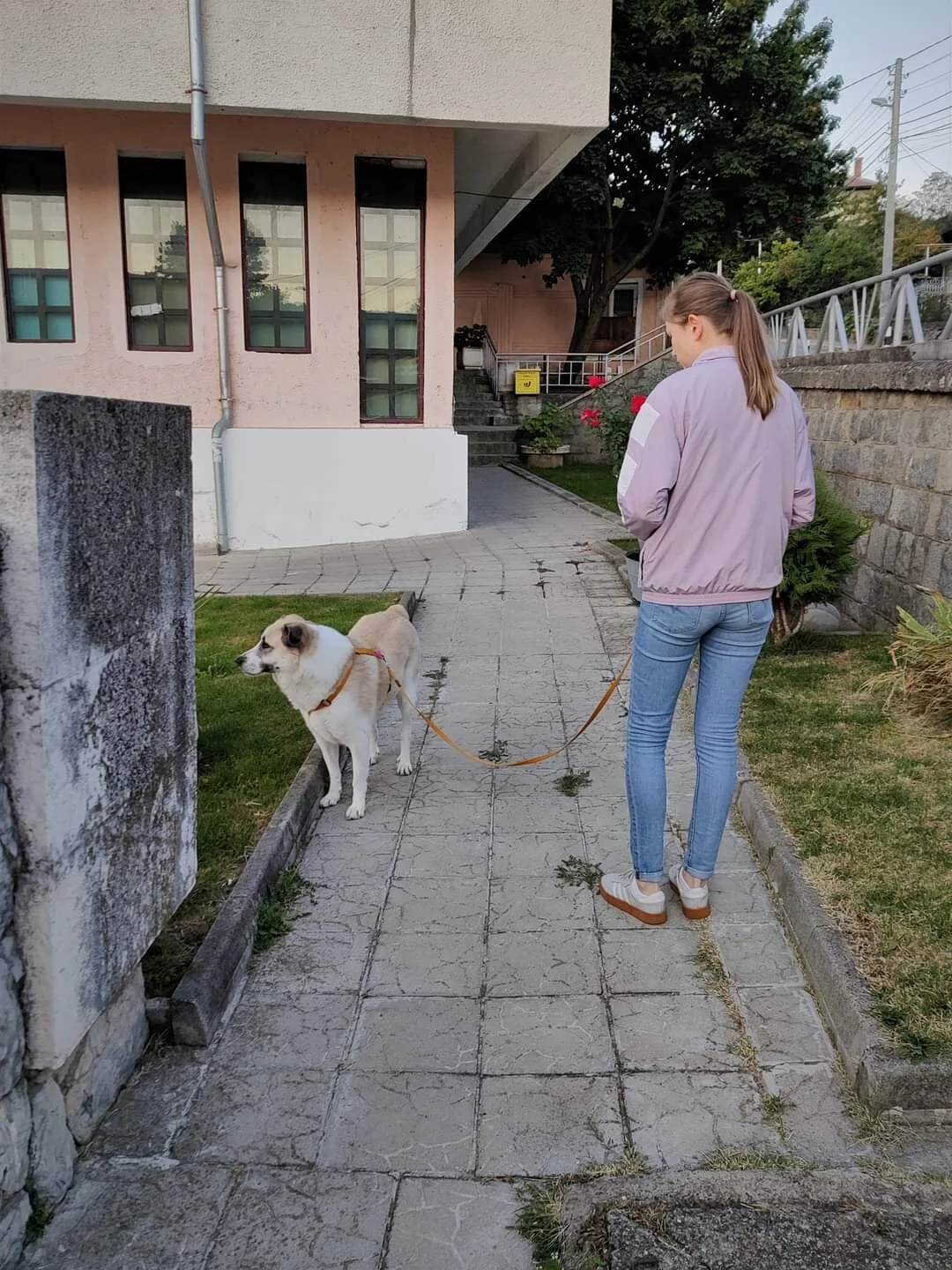Really Seeing Your Dog
We humans do not like uncertainty. As soon as something we do not quite understand comes up, we rush to give it a name and an explanation.
Lyuba stops for Heidi to observe
We want to give an explanation for our dogs' behaviour, too. For example, you often hear "my dog is aggressive, my dog is naughty", or "my dog is pulling on the leash because she is stubborn."
Sometimes this habit can play a bad joke on us and negatively influence our relationship with our dog. We simply may be translating our own feelings, cultural habits or past experiences on the dog without truly understanding her motivation and the meaning of her behaviour.
Dogs' behaviour certainly is complex. It's important to keep in mind that dogs do their best in any situation and act according to their ethogram and learning history.
In many situations when people consider dogs to be "problematic" or "naughty" or "annoying", dogs are actually displaying signals of stress or using coping mechanisms to deal with stress as per their ethogram.
It's up to us as dog guardians to change the situation or even our dog's routines, so that the dog is comfortable again and does not need to use those coping mechanisms.
Placing labels on the dog certainly does not help us or our dogs.
To avoid falling in the trap of putting labels on the dog's behaviour, we encourage you to start learning about dog's ethogram and body language. Great sources to start are:
The book “On Talking Terms With Dogs: Calming Signals” by Turid Rugaas
As a result, you will be able to better understand your dog and build a relationship based on trust and mutual understanding.
Martha from Silent Conversations wrote a great article on the topic:
We also want to offer you two simple exercises:
Simply observe your dog and name exactly what she is doing.
No personal judgement or labels, only the exact actions. Notice her body posture, too.
For example: my dog is sniffing on the ground, her muscles look relaxed, her tail is hanging loose, her ears are up.
Or: my dog is standing with her head up, her tail is wagging, she is looking at something in the distance, her facial muscles seem a little tense/tight.
You will slowly build a habit of truly observing your dog. As your understanding of the dogs' body language grows, so will your understanding of your own dog and your mutual trust.
To learn the dogs' body language it's best to start observing calming signals one by one.
Simply choose one calming signal and focus on it for a few days. Then move on to the next one.
For example: observe only lip licks in your dog over several days. When does she do it? In which situations, how often?
Progress this way until you are able to recognise all the calming signals.
We also suggest you to make videos of your dog or of other dogs and re-watch them several times using the exercises we described above. You can also do it using videos you find on the internet.
It may take some time but as a result you will be able to read your dog's body language more effectively, recognise early signs of discomfort and be a true advocate for your dog. You will be also able to understand your dog's needs better and act on them.

